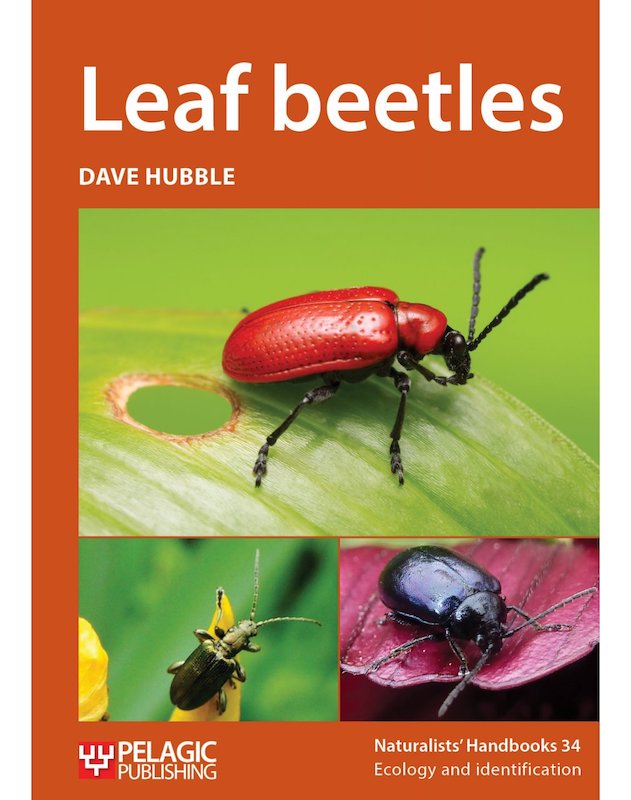
By David Hubble | Pelagic Publishing | Paperback | July 2017 | 149 Pages | Line drawings and coloured photos | ISBN: 9781784271503
The Publisher’s View: Leaf beetles are one of the largest groups of beetles, with tens of thousands of species worldwide and around 280 in Britain. They belong mainly to the family Chrysomelidae, but also to two small closely related families, the Megalopodidae and Orsodacnidae. Leaf Beetles provides a comprehensive overview with detailed and accessible coverage of the natural history, ecology and biology of leaf beetles.
Topics cover the life history of leaf beetles, biology, their environment, natural enemies and interactions with humans. There is a thorough discussion about identification of British species, including detail on the juvenile stages (eggs, larvae, pupae) and a concise key to adults. A chapter is dedicated to study techniques and materials. Leaf Beetles is illustrated throughout with colour photographs and line drawings.
Leaf Beetles is a vital resource for entomology students and educators, naturalists, nature conservationists, those involved in agriculture, horticulture and the management of stored produce.
The Author: Dave Hubble is a freelance ecologist. He is the organiser of the UK’s Chrysomelidae Recording Scheme and recently wrote the AIDGAP key to UK species. He also teaches Environmental Science at the Open University.
Fatbirder View: Summer is an unpredictable season in the UK and it seems increasingly so, judging by the scary heat and teeming rainfall this year. It’s also a time when rarities are least likely to turn up and breeding birds are least noticeable. Many of us turn our attention to other taxa, especially those that flourish in the summer months like dragonflies and butterflies. I’m no exception and have found myself chasing around after both, iPhone ready to capture enough detail to allow identification. I’ve tried following dragonflies with my bins and find some totally impossible. One’s garden also becomes a source of entomological interest at these times. I’m lucky to get two or three Odonata species visit my pond and a very limited number of Lepidoptera, although this year I’ve had more Commas than the last fifteen years combined and more and earlier Hummingbird Hawkmoths than ever before. Birders and other conservation conscious hobbyists tend to avoid polluting chemicals and offer sanctuary by way of bee-houses and pollen rich plants. Thus their gardens, even ones as wee as mine, become insect havens. Even a garden the size of a decent lounge can attract two dozen hoverfly species… I know because mine does! Bumblebees and other solitary bees abound too and I watch the miners shoring up holes with mud and leaf-cutters patching over with neatly trimmed vegetation. But beetles are a fairly rare site for me.Nevertheless, a few lilly beetles eat my plants and fat-legged flower beetles feast on my osteospernums. This has triggered my interest in one of the most numerous families in the animal kingdom, Coleoptera. So I was pleased to see this title available and even happier to receive it. I’m working my way through the text. There are some unfamiliar terms to digest but getting to grips with larval stages (instars) and all will take me some time so it’s good to have this book on my shelves to teach me more and help me ID the few species that turn up here or that I see on my outings.I’m a tad disappointed by the illustrations. Us birders are spoilt by a myriad of finely illustrated handbooks and some other insect orders are also well served. It would be a labour of love but one needs bigger and better pictures to help us amateur sleuths to get to grip with the clearly subtle differences. One thing is for sure… I’ll have to start accumulating guides to other beetles to stand a chance of truly understanding the different classes, let alone be certain that the beetle that scuttles under my shed is a ground beetle doing what it should or a leaf or flower beetle out of place!
Buy this book from NHBS Fatbirder
